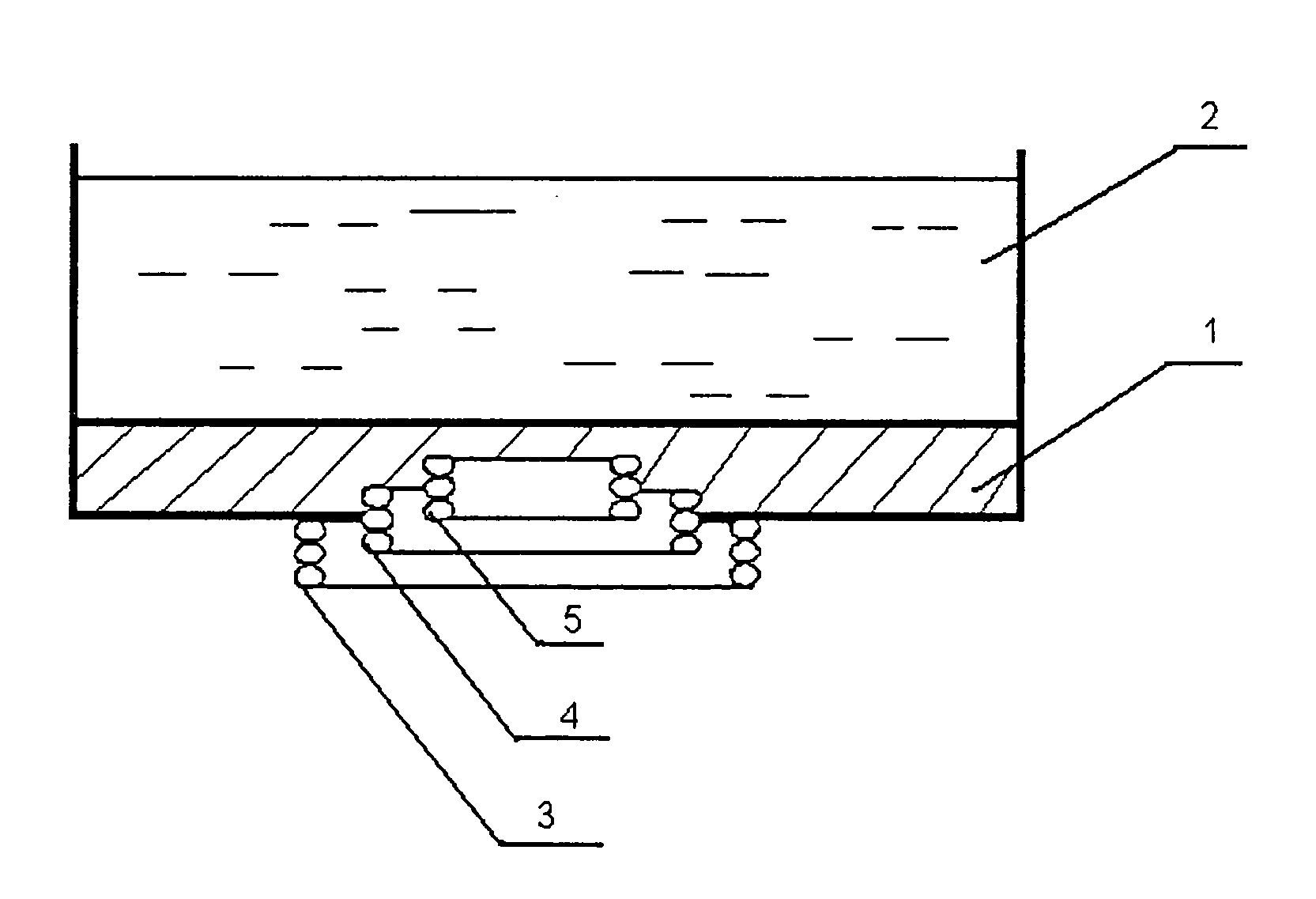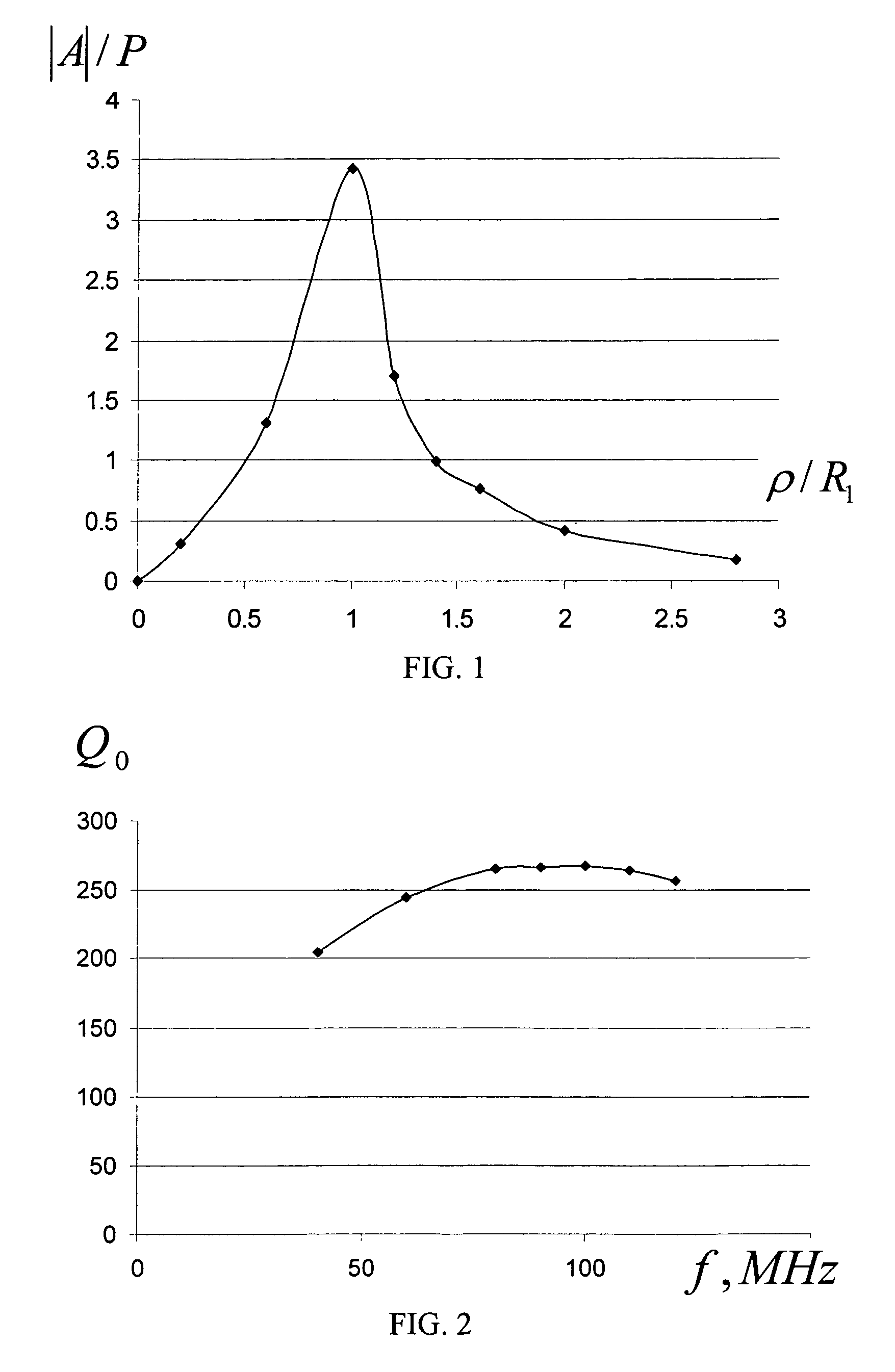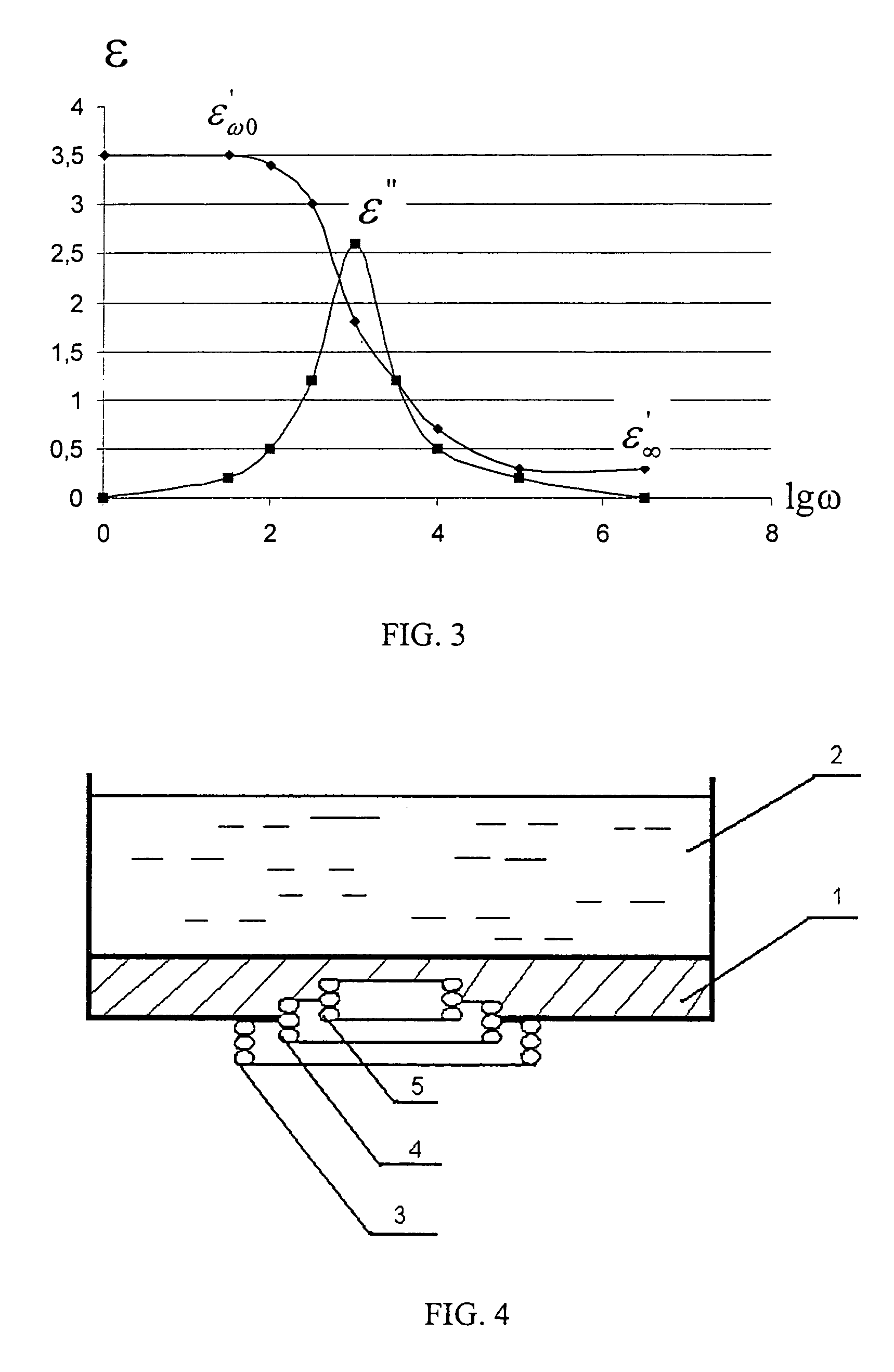Method of non-contact measuring electrical conductivity of electrolytes with using primary measuring transformer
a technology of electrical conductivity and non-contact measurement, applied in the direction of fluid resistance measurement, instruments, material impedance, etc., can solve the problems of polarization not always reversible, electrode symmetry disturbance, and state may not be restored
- Summary
- Abstract
- Description
- Claims
- Application Information
AI Technical Summary
Problems solved by technology
Method used
Image
Examples
example 1
[0107]The example illustrates the methodology of selecting the first operating frequency.
[0108]The relationship between the own Q-factor of the eddy current sensor Q0=ωL0 / r and the frequency has an extremal character. The explanation is that with the increase of the frequency the Q-factor is initially predominantly influenced by the growth of the inductance resistance that is found in the numerator. In this case Q0 is increased. Then starts prevailing the increase of the active resistance of the winding wire due to the current expulsion into the surface layer of the wire that has a higher resistance (skin effect).The extremum value and position depend on the geometry of the eddy current sensor, its dimensions, number of turns, availability and properties of the core, surface condition of the winding wire.
[0109]FIG. 2 shows the frequency characteristic of the own Q-factor of the eddy current sensor having the following parameters: sensor turn diameter Dav=14.5 mm, number of turns W=3...
example 2
[0111]From the expression for the generalized parameter β (4) (β=R1√{square root over (ωσμ0)}, where R1 is the radius of the eddy current sensor, ω—field frequency, σ—specific electrical conductance), that determines at the fixed clearance and sample thickness the introduced impedance of the eddy current sensor, it follows that frequency ω influences the value of the relative introduced active resistance Rυ / ωL0=Rv′ in the same degree as the squared radius of the sensor. Let us check how this theoretical statement is valid for materials with low σ.
[0112]The studies were performed on the test samples whose conductance depends on the movement of free charges, electrons and holes. Alloyed monocrystals of germanium and silicon semiconductors were used as electrical conductance test samples. The ohmic character of the conductance of the monocrystals, rather high homogeneity (electrical conductance variation values of the test samples after selection did not exceed 0.5%), absence of freque...
example 3
[0117]This is an example of studying the influence of reducing the number of turns on the introduced resistances Rv1 / ω1L0 and Rv2 / qω2L0.
[0118]Let us study the changes of the relative introduced active resistance of an eddy current sensor in the form of a short cylindrical inductance coil that occur with the reduction of the number of turns W. FIG. 5 shows the relationships between the relative introduced active resistance Rv / ωL0=Rv of the cylindrically shaped eddy current transducer of diameter D=14.7 mm and the number of turns W closely wound with a 0.4 mm diameter wire, the sensor's magnetic field frequency is f=19.5 MHz. The relationships were obtained on the germanium and silicon monocrystal samples with conductance values σ=1.2; 17.9; 200; Cm / m. An interesting feature of these characteristics is the presence of the maximum. This maximum with the increase of the total parameter β=R1√{square root over (ωσμ0)} becomes more vividly expressed and shifts to the field of lower values ...
PUM
| Property | Measurement | Unit |
|---|---|---|
| diameter | aaaaa | aaaaa |
| thick | aaaaa | aaaaa |
| diameters | aaaaa | aaaaa |
Abstract
Description
Claims
Application Information
 Login to View More
Login to View More - R&D
- Intellectual Property
- Life Sciences
- Materials
- Tech Scout
- Unparalleled Data Quality
- Higher Quality Content
- 60% Fewer Hallucinations
Browse by: Latest US Patents, China's latest patents, Technical Efficacy Thesaurus, Application Domain, Technology Topic, Popular Technical Reports.
© 2025 PatSnap. All rights reserved.Legal|Privacy policy|Modern Slavery Act Transparency Statement|Sitemap|About US| Contact US: help@patsnap.com



